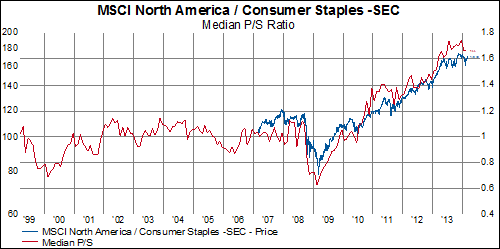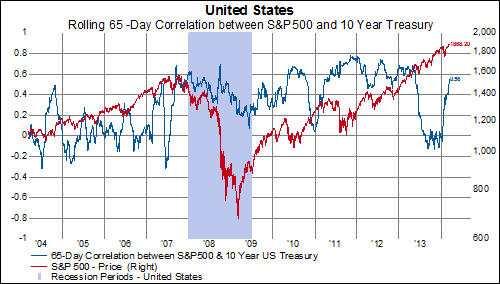In the example below we present the percent of stocks making new 100 day highs in price (blue line) and compare it to the price of the MSCI regional indices (red line). The pattern we want to highlight in this post is the following:
- New 100 day highs expanded off the June 2012 low fairly consistently until finally reaching an apex in late October 2013, all the way confirming the strength in the index price
- Around the new year, indices made new cycle highs, but the percent of stocks making new 100 day highs was lower than in October 2013
- Around February 19th, stock indices again made new cycle highs, but the percent of stocks making new 100 day highs was even lower than the reading around Jan 1
- On March 6th, stock indices again made new cycle highs and this time the bounce in new 100 day highs was not even observable
So we are now in a situation where the past three stock market highs have been achieved with an ever narrowing list of stocks making new highs. That is an unsustainable situation, which generally points to lower prices unless broad stock participation picks up meaningfully. We will be watching for exactly that on the next rally attempt.






















































